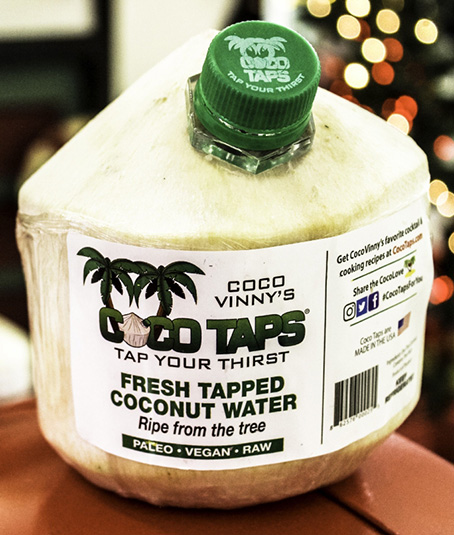Coco Taps’ Fresh-Tapped Resealable Coconuts Now Available in Select Whole Foods Market Stores
Shoppers looking for the freshest coconut water now have the convenience of drinking directly from a tapped young coconut without any mess. The resealable and reusable cap keeps coconut water fresh for more than three weeks in the refrigerator and reduces waste.
Coco Taps, a coconut water beverage system company, announced they are now selling fresh-tapped young coconuts in Whole Foods Market stores in Arizona (USA), Southern California (USA) and Southern Nevada (USA).
 Shoppers looking for the freshest coconut water now have the convenience of drinking directly from a tapped young coconut without any mess. The resealable and reusable cap keeps coconut water fresh for more than three weeks in the refrigerator and reduces waste. The coconut, as a container, uses less packaging and manufacturing materials than traditional boxing, bottling and canning processes, making it a more sustainable consumer choice for the planet.
Shoppers looking for the freshest coconut water now have the convenience of drinking directly from a tapped young coconut without any mess. The resealable and reusable cap keeps coconut water fresh for more than three weeks in the refrigerator and reduces waste. The coconut, as a container, uses less packaging and manufacturing materials than traditional boxing, bottling and canning processes, making it a more sustainable consumer choice for the planet.
Coco Vinny Turns A Coconut into a Container
In 2014, Coco Taps Founder and Chief Coconut-in-Charge Vince Zaldivar, also known as "Coco Vinny," designed the coconut beverage system. After he broke an expensive knife and almost cut off his finger while trying to open a coconut, the Coco Taps Tool Kit was born. Coco Taps uses its patented tools to prepare the coconuts for sale.
Unpasteurized and Pure Coconut Water
Hydrating and low in sugar and calories, each unpasteurized ounce of clear liquid inside a fresh coconut fruit is high in potassium and provides fiber. One eight-ounce serving of coconut water contains 45.6 calories, 6.3 grams of sugar, 2.6 grams of fiber and 600 milligrams of potassium, according to the USDA.









